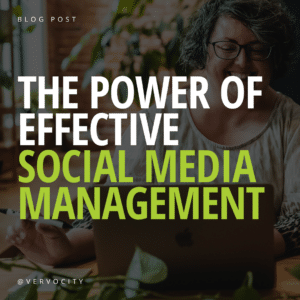Blogging helps you promote your business, attract an audience, and optimize your website for search engine optimization or SEO. You can use your content to your advantage, but you have to blog regularly to reap the benefits. Having a plan in place can make it easier to stay on top of regular blogging. We’ve come up with six steps to plan around, so give it a try!
Step 1: Get to know your blogging audience
Before you write your first blog, get to know your audience. Who are you writing this content for? What do they want to know? Consider their interests while you’re deciding upon the subject matter of each blog.
Make your assessment by creating buyer personas. Give your buyer a name, decide upon their job title, and consider their interests. Base these personas on your current clients. If you’re looking for help creating your buyer personas, try this free template or use the MakeMyPersona.com free tool.
Step 2: Perfect your title and topic
Your goal should be to write a blog title that is catchy and irresistible. Know the difference in topic and title. A topic might be “kite flying,” but the title would be “Five killer kite flying tips for newbies.” Write your title with accuracy in mind.
It’s time to get creative though. You can have fun with alliteration where you repeat sounds or stressed syllables in your phrase. An example would be “brisk breakfast” or “she sells seashells.” Use strong phrases that pack a punch or make your blog’s value clear to the reader and keep your title short for better ranking and ensure that it is not cut off in search engine results or social sharing.
Step 3: Stay organized
Create an outline of the content you’d like to mention on your blog. As you write, separate ideas into sections, lists, or tips as appropriate. Use H2 headers to separate each section for ease of reading. Often your reader will skim down the page, so make sure that they can find headers as they go down the page.
Step 4: Write first, edit later
You must get your ideas on paper (or Word document) first. Don’t worry about grammar and punctuation at this stage. Your first draft will not be perfect, and that’s ok. As you get out all your ideas, make sure they follow your outline.
Then let your writing sit a while. Editing will make more sense after time has gone by or you’ve slept on it. You can also find someone in your office to read it for you. The second set of eyes on your content is a good thing.
As you edit, ask questions. Does that paragraph make sense? Does it need more detail? Is the formatting clean? During the editing process, run your content through a spell check and grammar check. Tools like Grammarly, Writer, and GrammarCheck are necessary tools of the trade.
Step 5: Use a call-to-action
Your blog should not just come to an end. You need to direct the reader to do something at the end of the content. A call-to-action might tell them how to subscribe to the blog, download an ebook, register for an event, read another related article, sign up for your newsletter, or something similar. Your readers want to learn more, so give them more details!
Step 6: Optimize for SEO
Make your blog keyword-friendly. Did you use a keyword or keyword phrase to capture search traffic? You should use it in the first sentence of your introduction and then sprinkle it in naturally throughout your content.
Customize your meta description. This is the content that shows up on Google’s search results pages. It should be a summary of what’s on the page. Its length should be up to 160 characters with an actionable verb like “read” or “discover” included.
Include anchor text within your content. These will be words or phrases made into a hyperlink leading to another page on your website or a resource website. Consider linking to pages that rank well for the keywords you’re concentrating on.
Optimize your images. If you have a photo attached to your blog, be sure to include keywords in the file name and fill out the alt text with a brief, keyword-rich description.
Are you overwhelmed?
If blogging seems complicated, confusing, or time-consuming, consider hiring Vervocity to do it for you. We have a professional writer in Quincy, IL who is skilled at following our roadmap to develop the most interesting and captivating content for your audience. We get real results for our clients and take the pressure off!
Call (217) 222-1451 for a free, no-obligation consultation on blogging. We’ll sit down with you to discuss your unique needs and goals while pulling together a plan of attack for your blog’s future.










